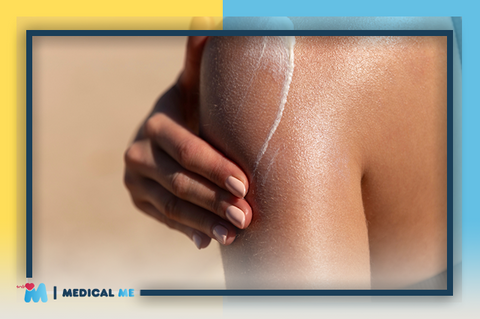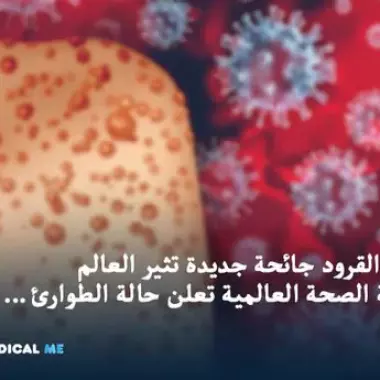هل سرطان الجلد بقعة خبيثة المظهر فقط أم ينتشر لأماكن أخرى؟
يظهر سرطان الجلد غالبًأ في المناطق المكشوفة من الجلد مثل الوجه والرقبة واليدين والأذن والكتفين، يبدأ منها سرطان الجلد ولكن لا ينتهي فيها.
أشهر أسباب سرطان الجلد نظريًا حتى الآن هو التعرض المباشر للشمس والأشعة فوق البنفسجية خاصةً في مراكز السُمرة أو التان التي تعتمد على إكساب الجلد اللون البرونزي، ولكن هذا ليس هو السبب الوحيد بدليل إصابة العديد من الأشخاص بسرطانات الجلد في مناطق غير مكشوفة ولم تتعرض لأشعة الشمس.
الخبر الجيد أنه يمكن ملاحظة بداية السرطان الجلدي بسهولة ويمكن علاجه حتى بدون أن يترك أثر إذا تم الكشف عنه مبكرًا وعلاجه.

أنواع سرطان الجلد:
هناك نوعان رئيسيان لسرطان الجلد يندرج تحتهما جميع أنواع سرطانات الجلد وهما:
- السرطان الميلانيني (Melanoma):
يُعد أخطر أنواع سرطانات الجلد إذ إنه يظهر في أي مكان في الجسم، فكما يظهر في الأماكن المكشوفة قد يظهر في أماكن أخرى صعب اكتشافه بها مثل الحلق والأذن الداخلية وباطن القدم.
يختلف هذا النوع في بداياته؛ إما أن يتشكل من شامة قديمة في الجلد أو أن يُكون شامة جديدة، ولكن يمكن التفرقة بينهما كما يلي:
- الشامة الطبيعية:
لا تُشكل أي خطر ولا تستدعي الكشف أو أي علاجات وتتميز بأنها:
- ذات لون مُوحد.
- لها حدود منتظمة.
- صغيرة الحجم في حدود 6 مليمترات.
- لها شكل متناسق واضح يشبة الدائرة أو الشكل البيضاوي.
- لا يزيد حجمها مع الوقت.
- أعراض سرطان الجلد الشامة السرطانية :
تظهر فجأة بشكل مُريب يستدعي الفحص والمتابعة مع طبيب وتختلف عن الشامة الطبيعية في كونها:
- حدودها غير منتظمة.
- شكلها غير متناسق كأنك جمعت نصف الدائرة مع نصف الشكل البيضاوي.
- ذات لون غير مُوحد.
- حجمها أكبر من الشامة العادية (أكبر من 6 مليمترات).
- يزداد حجمها مع الوقت وتبدو وكأنها تتشعب.
ولا يجب أن ينطبق على الشامة جميع الأعراض كي نرتاب بأمرها، يكفى أن تتسم بصفة أو أكثر مما سبق لكي تسترعي انتباهنا ونتوجه للكشف عليها.
- السرطان غير الميلانيني (Non melanoma cancer):
يندرج تحت هذا النوع جميع أنواع سرطانات الجلد التي لا تكون صبغة الميلانين جزءًا منها وتشمل:
- سرطان الخلايا القاعدية:
الخلايا القاعدية هي خلايا موجودة في الجلد وتسمى ب(Basal cell carcinoma) أو (BCC)، تعمل تلك الخلايا على إنتاج خلايا الجلد الجديدة للجلد والتخلص من الخلايا الميتة، أما في حالة السرطان تتضرر المادة الوراثية في تلك الخلايا مما يجعلها تنتج الكثير من خلايا الجلد الجديدة بلا ضوابط؛ مما يُنتج تشوهًا أو تكتل في شكل الجلد.
تبدو بقع سرطان الخلايا القاعدية بشكل لامع يُشبه الماء المُتعكر أو الشمع إذ يمكنك رؤية الشعيرات الدموية بصعوبة من خلالها، وقد تتجمع عليها قشور من الجلد الميت أو تنزف في بعض الأحيان، ويختلف لونها حسب لون البشرة فتظهر باللون الوردي مع ذوي البشرة الفاتحة واللون البني أو الأسود في حالات ذوي البشرة السمراء.
- سرطان الخلايا الحرشفية:
يتكون نسيج الجلد في الأساس من الخلايا الحرشفية (Squamous cell carcinoma) أو (SCC) في طبقاته الخارجية والوسطى، وعند الإصابة بالسرطان تتشكل بقع واضحة من الجلد متغير الشكل إما على شكل حبة حمراء أو قرحة ذات ملمس حُبيبي لا تُشفى مع الوقت.
يمكن التخلص من سرطان الخلايا الحرشفية عن طريق عملية جراحية بسيطة يتم فيها إزالة الجزء المُصاب، إذا تم اكتشافها مبكرًأ دون أن تنتقل إلى أجزاء أخرى.
- الساركوما الوعائية:
تحدث الساركوما الوعائية (Angiosarcoma) نتيجة التهاب أحد الأوعية الدموية أو الليمفاوية تحت الجلد، وقد ينتشر إلى أجزاء الجسم المختلفة بسهولة عن طريق الدم وهنا يكمُن خطره رغم قلة حدوثه.
- الساركوما الليفية الجلدية الحديبية:
تُعد الساركوما الليفية الجلدية الحديبية (Dermatofibrosarcoma protuberans) من أكثر أنواع السرطان نُدرة وأقلها خطرا إذ يتكون في أدمة الجلد أي الطبقات الداخلية وينمو ببطء ولا يخرج عن الجلد مطلقًا.
- سرطان خلايا ميركل:
سرطان خلايا ميركل (Merkel cell carcinoma) أيضًا من السرطانات النادرة الحدوث ويُدعى أيضًا بسرطان الغدد الصم العصبية (Neuroendocrine carcinoma)، يظهر كبقعة ذات لون أحمر داكن أو مائل للزُرقة.
ينتشر في المرضى ذوي السن الكبير إذ يتعرضون لأشعة الشمس ويعانون ضعف جهاز المناعة، وقد تنتشر حبيبات سرطان ميركل للجسم كاملًأ، و يعتمد العلاج على نسبة انتشاره قبل تشخيص السرطان.
علاج سرطان الجلد:
يعتمد علاج سرطان الجلد على المرحلة التي وصل إليها تطور السرطان وانتشاره قبل التشخيص وبداية العلاج، وأيضًأ على نوع السرطان بالطبع.
وتشمل طرق العلاج ما يلي:
- الاستئصال:
يتم التخلص من الجزء المُصاب بالورم في الحالات البسيطة من السرطان التي لم ينتشر فيه السرطان إلى أي أعضاء أخرى، وقد يستأصل الجراح الغدد الليمفاوية المتصلة بالسرطان مباشرة أثناء العملية إذا انتشر إليها السرطان أو يُحتمل تورطها مع الورم.
- الإزالة المجهرية:
تُعد أدق أنواع جراحات التخلص من السرطان؛ إذ يستأصل الجراح طبقة من الجلد تلو الأخرى مع فحصها بعناية تحت المِجهر لضمان التخلص من كل الأجزاء المصابة مع الحفاظ على أكبر قدر من الجلد السليم، وتتم هذه العملية في الأجزاء الحساسة المكشوفة من الجلد كالوجه واليدين.
- العلاج المناعي:
تتمحور فكرة هذا العلاج عن طريق دعم جهازك المناعي ضد السرطان بالأخص إذا كان سبب حدوثه هو تأثُر مناعة المريض، وقد يتم حقنه مباشرة في الخلايا الليمفاوية في حالات الورم الميلانيني إذا تعذر التخلص من الورم كاملًا بالاستئصال.
ولكن جدير بالذكر أنه في بعض حالات السرطان يكون تأثيره محدود للغاية، إذ يستطيع الورم التخفي منه وينجو من تأثيره.
- العلاج بالتجميد:
تتم هذه العملية الدقيقة عن طريق تجميد الورم بالنيتروجين السائل الذي يقتل الخلايا تمامًا، ولكن يجب أن يكون حجم الورم صغير جدًأ أو يكون الإجراء علاجًا لحالات ما قبل السرطان.
- العلاج الاستهدافي:
يستهدف العلاج نقاط ضعف الخلايا السرطانية ويجب تجربته أولًا على بعض خلايا الورم للتأكد من فعاليته، ثم يتم استخدامه ضد خلايا السرطان ويلجأ له الطبيب في حالات السرطان الميلانيني الذي انتشر في أكثر من منطقة وتعذر التخلص منه بالجراحة.
- العلاج الكيميائي:
يُعد أشهر أنواع العلاجات للسرطانات بأنواعها وبات يعلم اسمه الجميع، يمكن أن يُعطي عن طريق الحقن بالوريد أو أقراص عن طريق الفم أو كليهما معًأ طبقًا للحالة ودرجة الورم.
ويمكن إجراء ما يسمى بالإرواء المنعزل للأطراف (Isolated limb perfusion)، إذ يتم توصيل العلاج الكيميائي بالوريد وعزله عن الجسم بشكل مؤقت لكي يمنع وصول الدم الحامل للعلاج الكيميائي لباقي الجسم مما يقلل الأعراض الجانبية.
- العلاج الإشعاعي:
تُوجَه جرعات عالية من الإشعاعات (أشعة سينية أو بروتونات) حاملة لكمية ضخمة من الطاقة إلى الغدد الليمفاوية المصابة فتُضعف الورم وتُضعف انتشاره.
- العلاج الموضعي:
تُستخدم بعض الدهانات الموضعية والتي تحتوي على علاج كيميائي موضعي مثل: خماسي فلورايد اليوراسيل (5 Fluorouracil) أو كريم محفز للمناعة مثل ايميكويمود (Imiquimod) لعلاج الورم موضعيًا للحد من الآثار الجانبية لتناول هذه الأدوية عن طريق الفم أو الحقن.
الوقاية من سرطان الجلد:
“الوقاية خيرٌ من العلاج” مقولة شهيرة لطالما ثبتت صحتها؛ ولهذا ننصح باتباع هذه الإرشادات للوقاية من سرطانات الجلد.
- تجنب التعرض لأشعة الشمس المباشرة لفترات طويلة.
- إحرص على تغطية الأجزاء المكشوفة في جسمك إذا اضطررت لقضاء وقت طويل في الشمس.
- استخدم كريم حماية من الشمس بعامل حماية 30% أو أكثر.
- ابتعد عن مراكز التسمير أيًا كانت الطريقة المُتبعة فيها.
- راقب جلدك باستمرار وإحرص على اكتشاف أي تغيرات في شكله وملمسه.
ملخص المقال:
تعرفنا في هذا المقال على ما هو سرطان الجلد واعراضه وأسبابه، وكيفية التفرقة بين أنواعه المختلفة وعلاجها وناقشنا اعراض سرطان الجلد الخبيث والحرص على سرعة تشخيصها وعلاجها، وأيضًا طرق الوقاية من سرطانات الجلد المختلفة، حفظنا الله وإياكم!


























